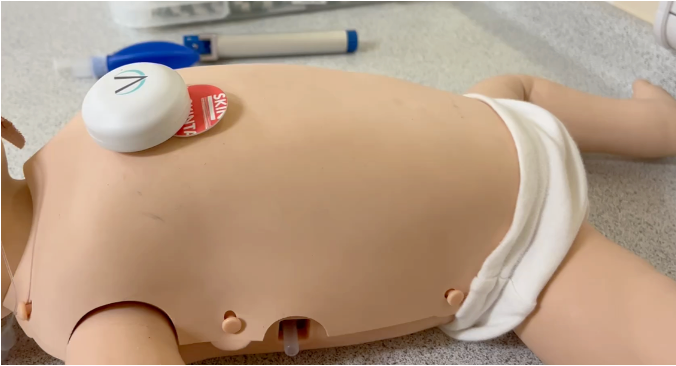EHI CCIO interview: Dr Rhidian Bramley
- 2 February 2012

If you work in radiology, the chances are you know Rhidian Bramley already. If you are one of those entering the new world of chief clinical information officers, then chances are you about to meet him.
Dr Bramley is CCIO at The Christie NHS Foundation Trust, Manchester. Among other things, he is also director of clinical radiology, a member of the trust’s informatics board, PACS lead for NHS Connecting for Health, a former chair of the UK Imaging Informatics Group, a software developer, a web designer and a general whirlwind in the world of healthcare informatics.
Yet it is not informatics and IT that fires him up. “As a doctor, I have always been interested in service improvement – in patient care, efficiency and in supporting the people I work with” he says. “IT is a useful tool for doing that, but ultimately it is a means to an end.”
Starting with Basic
Like anyone of his generation with an interest in IT, he started with a ZX Spectrum and a BBC Micro – “getting a computer doing what I wanted it to do” – but spent his first ten years as a junior doctor working without computers.
When they first arrived in his working life, he discovered the power of databases and audit.
His first professional IT experience was in education and training, where he set up a web-based education community for radiology trainees.
“By the time I handed it over to the next generation, there were 8,000 members,” says Dr Bramley. “I realised early on what amazing social networks you could create and how we could all interact and benefit from access to an online community.”
By the early 1990s, and now at The Christie, he was involved in lobbying for PACS to become part of the National Programme for IT in the NHS and, through a leadership role at the North West strategic health authority, in making sure that radiology got the right systems and software.
“It was an exciting time,” he says. “I was involved in all the PACS deployments in the North West and West Midlands, carrying out the testing, ensuring we had clinical engagement and defining the standards around best practise.”
PACS is, of course, one of the acknowledged successes of the NPfIT – even if it was a late addition to the programme. Dr Bramley puts this down to a combination of good project management with strong clinical leadership – and the fact that it was a proven commercial product.
“My role was in addressing the clinical risks in the project and in talking to trusts about the opportunities for service redesign,” he adds. “There was a rapid roll out and we would not have achieved that without the national programme.”
Pathways through portals
Since those heady days, he has been involved in developing an information governance framework for sharing images and reports; rolling out voice recognition, now used by 84% of radiologists in the North West; and developing the national radiology procedure codes and data sets that are now coming to fruition.
He is also a developer. “I have developed a number of systems that are supporting care pathways,” he says. “You do not have to outsource everything.” All his work is NHS intellectual property.
One example is the North West PACS Portal that allows doctors to view their patient’s images, taken in any NHS hospital across the region. It now has 6,500 active users and is being accessed 20,000 times a month.
“The portal is benefiting our patients with cancer, stroke and trauma by reducing the time from diagnosis and treatment,” he explains.
Within The Christie he sits on the informatics board, a position from which, he says: “I have been trying to bring about a culture change.”
For instance, he is promoting wider access to clinical records through development of The Christie clinical portal. This allows clinicians in primary and secondary care to access their patient’s electronic medical records at The Christie, supporting a model of shared care for cancer patients across the healthcare community.
“GPs have shown great enthusiasm for accessing the hospital care record. It helps with consultations when they can show patients their images through single-sign-on with PACS.” Next up is a patient portal.
Supporting the EHI CCIO Campaign
The appointment as CCIO in November 2011 seemed like a natural next step. “I’d been following the EHI CCIO Campaign and looked at the job description [BCS Health] had developed and I felt that this matched the clinical lead role we were developing at The Christie.
“I was keen to use the title to support the campaign because I believe local clinical leadership in IT can significantly improve patient care and services, and help audit outcomes.”
He is now half time clinical and half time management and IT although, he adds: “People increasingly want more of my time for informatics.”
He works closely with the trust’s informatics team leaders in clinical systems, information, IT-enabled change and ICT, and reports to the director of finance (who has executive responsibility for IT) and the informatics board.
The main item on his agenda now is a new electronic patient record for the trust. Again, he says: “We are looking for a culture change.”
It’s early days yet, but Dr Bramley explains the trust’s vision: “We are looking towards linking best of breed systems and developing our in-house capability to take control of our integration engines, data warehouse and reporting services to provide our clinicians, managers and commissioners with a richer picture.”
Not surprisingly, he believes every trust needs clinical leadership in informatics and IT and rejects the argument that if you appoint a champion, it ceases to be everyone’s responsibility.
“I still see the CCIO role in clinical leadership as very much a service development and service management role,” he says. “It is someone who can link IT with other areas of the trust.
“It is amazing, the number of clinicians I talk to who are similarly motivated to improve their services and patient outcomes. My job is to help them achieve their goal.”




